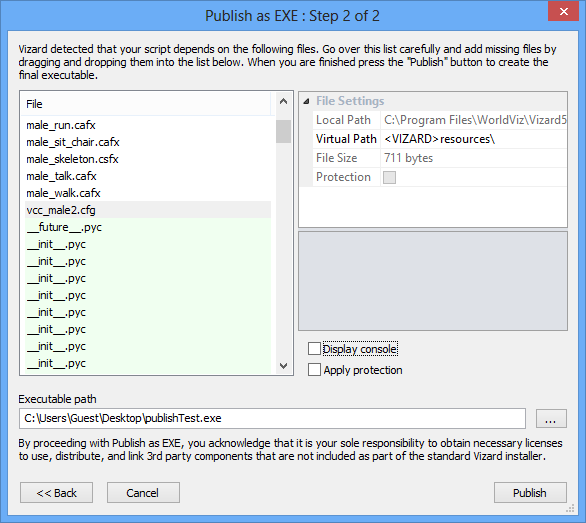This tutorial provides an introduction to publishing an EXE. The topics covered include:
This content is discussed in more detail in the reference section.
Use the Publish as an EXE feature to bundle all scripts and resource files into a single executable. The EXE will run as a fully functional Vizard script with the notable difference being that it can run on any machine without Vizard being installed.
Note: Exe's cannot be edited or modified (i.e., scripts or resource files changed) without re-publishing on a licensed Vizard development machine.
Copy the code below into a new Vizard script:
Save the script and then select File > Publish as EXE to launch the publish wizard:

Press the Run button to start capturing script resources. In order for a resource to be automatically detected and added to the list of dependencies, it needs to be loaded by the running script at this time.
Close the script to proceed to Step 2 of the publish Wizard:

This is where files can be manually added if they are not automatically found. In this case, all resources are loaded at the beginning of the script and automatically found by the publish wizard. It is not necessary to manually add files. Step 2 has the following options that can be enabled:
In the next section you'll get a chance to enable the display console. For now, leave both options unchecked. Click Publish and wait for the Finished Publishing dialog to display:

When a published EXE is launched, it unpacks all scripts and resources to a temporary directory before executing it. After the script executes, the published EXE will delete the temporary directory.
You may notice the initial load time of the EXE is longer than when running from the source. This is due to the additional time required to unpack the files. If load time is a concern, you can enable publish persistence. Persistent EXEs unpack all the script files to a fixed directory and will not delete them after finishing. Subsequent executions of your published EXE will use these existing files, instead of unpacking them, which can greatly speed up the startup time of your EXE.